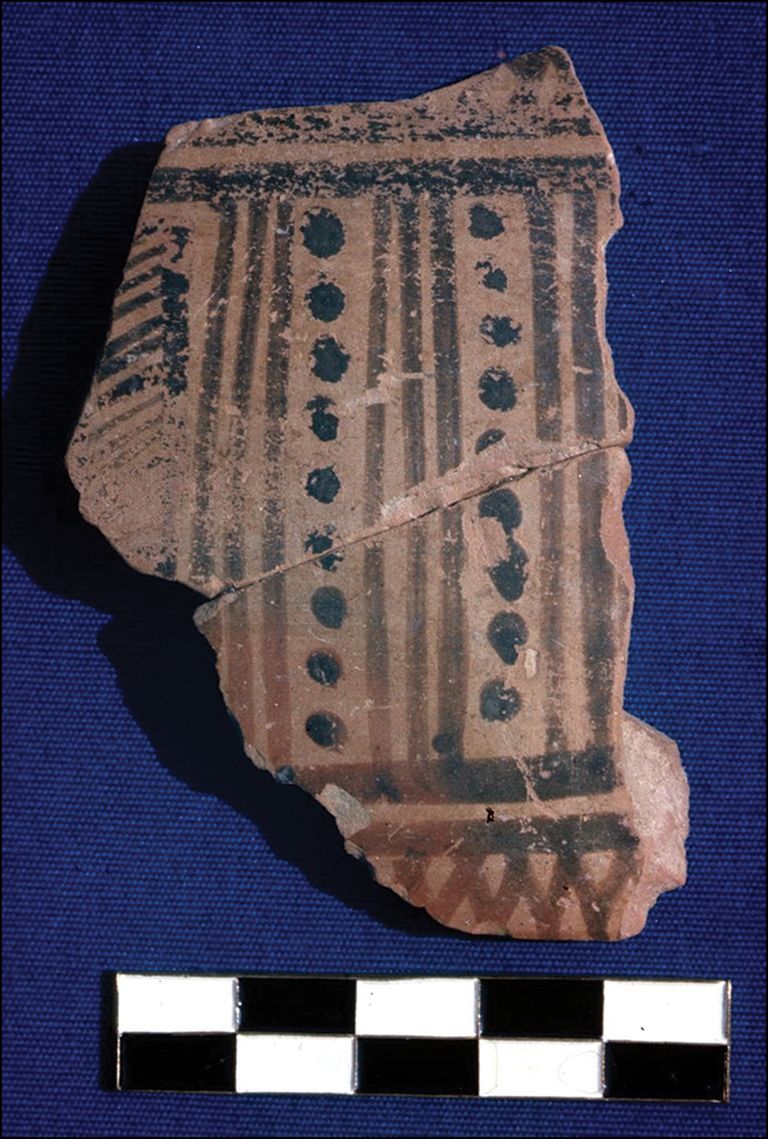Stonehenge is a magnificent monument, so we've put together a special collection of research into the site spanning nearly 100 years of study! 🪨
Here's an #AntiquityThread on some highlights from it (🆓) buff.ly/2NlXiag 1/ 🧵
Here's an #AntiquityThread on some highlights from it (🆓) buff.ly/2NlXiag 1/ 🧵

One of the biggest recent discoveries about Stonehenge is that some of the monument's bluestones were originally part of Waun Mawn - another stone circle, over 200 km away in 🏴. 2/
📷: Remains of Waun Mawn
📷: Remains of Waun Mawn

Most of the stones of Waun Mawn have been removed, but excavations of the empty stone holes was still able to identify key links with Stonehenge. 3/
🔗 to this research (🆓) doi.org/10.15184/aqy.2…
📷: One of the stone holes
🔗 to this research (🆓) doi.org/10.15184/aqy.2…
📷: One of the stone holes

Archaeologists identified Waun Mawn because they knew some of Stonehenge's stones came from that part of Wales.
Earlier research had identified several nearby quarries the monument's bluestones were mined from. 4/
📷: One of the quarries, Carn Goedog.
Earlier research had identified several nearby quarries the monument's bluestones were mined from. 4/
📷: One of the quarries, Carn Goedog.

Cavities the megaliths were lifted from were still visible at the site. 5/
🔗 to the research (🆓) doi.org/10.15184/aqy.2…
📷: In situ pillars
🔗 to the research (🆓) doi.org/10.15184/aqy.2…
📷: In situ pillars

How did they get all these stones to Stonehenge?
Lots of animal fat has been found on pottery from the nearby site of Durrington Walls - a sign of feasting, or a lubricant for moving rocks? 6/
🔗 to the research (🆓) doi.org/10.15184/aqy.2…
📷: Pottery from Durrington Walls
Lots of animal fat has been found on pottery from the nearby site of Durrington Walls - a sign of feasting, or a lubricant for moving rocks? 6/
🔗 to the research (🆓) doi.org/10.15184/aqy.2…
📷: Pottery from Durrington Walls

However the rocks arrived at Stonehenge, the work wasn't done. The monument has gone through several versions over its life. 7/
📷: The earliest version of Stonehenge, and how it is today, by Adamsan / CC BY-SA 3.0

📷: The earliest version of Stonehenge, and how it is today, by Adamsan / CC BY-SA 3.0


The landscape around the monument changed as well. There used to be another stone circle, mostly made up of the smaller bluestones, nearby. 8/
Archaeologists gave it the creative title 'Bluestonehenge'
📷: Recreation of Bluestonehenge by Peter Dunn
Archaeologists gave it the creative title 'Bluestonehenge'
📷: Recreation of Bluestonehenge by Peter Dunn

Some of the bluestones from Waun Mawn may have also been part of this monument. 9/
🔗 to the research (🆓) doi.org/10.15184/aqy.2…
📷: Bluestonehenge under excavation.
🔗 to the research (🆓) doi.org/10.15184/aqy.2…
📷: Bluestonehenge under excavation.

Who moved all the bluestones all this way? Well, Stonehenge is actually a graveyard - human remains have been found in the leftover holes from earlier phases of the monument. 10/
🔗 to the research (🆓) doi.org/10.15184/aqy.2…
📷: Excavation of one hole
🔗 to the research (🆓) doi.org/10.15184/aqy.2…
📷: Excavation of one hole

Later analysis suggests at least some of these people were likely migrants from the area of Waun Mawn.
Perhaps people decided to bring their monuments with them when they moved! 11/
Perhaps people decided to bring their monuments with them when they moved! 11/
Of course, this is just scratching the surface of that magnificent monument, so be sure to check out all the other research in the collection 👇 12/12 

• • •
Missing some Tweet in this thread? You can try to
force a refresh



















